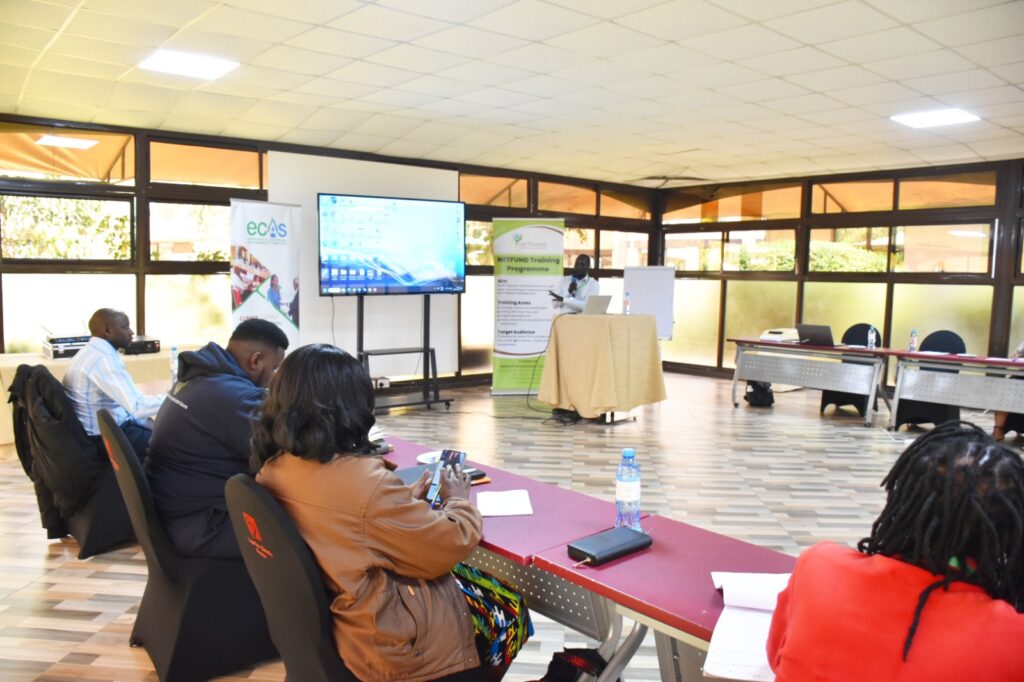
INTERNATIONAL TRAINING ON CLIMATE ADAPTATION PLANNING FOR DISASTER AND EMERGENCY MANAGEMENT
COURSE BACKGROUND
The increasing frequency and intensity of climate-related disasters such as hurricanes, floods, wildfires, heatwaves, and droughts are putting immense pressure on emergency response systems and disaster risk management frameworks. Climate change has amplified the severity of extreme weather events, leading to economic losses, infrastructure damage, food and water insecurity, displacement, and loss of life. Without effective adaptation planning, communities, governments, and emergency response agencies will continue to struggle with disaster preparedness and recovery efforts.
Recognizing this urgent need, the Environmental Capacities and Sustainability (ECAS) Institute has developed this specialized course to enhance climate adaptation strategies within disaster and emergency management. This course focuses on integrating climate science, risk assessment, early warning systems, and resilience-building strategies into disaster preparedness and response planning. Participants will gain the necessary skills to assess vulnerabilities, design adaptation measures, and strengthen emergency response mechanisms in the face of climate-induced disasters.
This training provides a multidisciplinary approach, incorporating disaster risk reduction (DRR), emergency response strategies, climate-resilient infrastructure, nature-based solutions, and community-led adaptation initiatives. The course also emphasizes policy integration, cross-sectoral collaboration, and the use of technology in managing climate risks effectively.
By the end of the course, participants will be equipped with the tools, frameworks, and best practices to develop and implement climate adaptation plans that enhance disaster preparedness, response, and recovery efforts.
COURSE OBJECTIVES OF THE TRAINING
By the end of the course, participants will be able to:
- Understand the link between climate change and disaster risk and its implications for emergency management.
- Conduct climate risk and vulnerability assessments to inform disaster preparedness plans.
- Develop and implement adaptation strategies that enhance community and institutional resilience.
- Improve early warning systems and disaster response mechanisms using technology and data-driven approaches.
- Integrate climate adaptation into emergency management policies and planning processes at local, national, and regional levels.
- Strengthen coordination between emergency responders, policymakers, and local communities to improve climate resilience.
- Access climate finance opportunities for disaster risk reduction and emergency management initiatives.
- Apply nature-based solutions such as ecosystem restoration to mitigate disaster impacts.
WHAT YOU WILL LEARN
Participants will gain technical knowledge, policy insights, and hands-on skills in climate adaptation and disaster risk management. Key learning areas include:
- Climate Change and Disaster Risk Nexus – Understanding how climate change intensifies disasters and affects emergency management.
- Disaster Risk and Vulnerability Assessments – Tools and methodologies for assessing climate-related disaster risks.
- Early Warning Systems and Disaster Preparedness – Strengthening forecasting, alerts, and rapid response strategies.
- Climate-Resilient Infrastructure and Urban Planning – Designing infrastructure that can withstand extreme climate events.
- Nature-Based Solutions for Disaster Risk Reduction – Using ecosystems to mitigate the impacts of climate disasters.
- Community-Based Adaptation and Disaster Preparedness – Engaging local communities in climate adaptation planning.
- Policy and Governance in Climate Adaptation and Disaster Management – Strengthening institutional frameworks for resilience.
- Climate Finance and Resource Mobilization – Identifying funding opportunities for adaptation and disaster risk reduction projects.
DURATION AND PROGRAM
TARGET PARTICIPANTS
This course is designed for disaster management professionals, emergency responders, policymakers, climate adaptation practitioners, environmental planners, development agencies, humanitarian organizations, and community leaders involved in climate risk management and disaster preparedness. It is also relevant for municipal planners, engineers, NGOs, and private sector actors working on infrastructure resilience, emergency response, and sustainable development.
TRAINING MODULES
| No | Module | Details | |
| Climate Change and Disaster Risk Nexus |
|
||
| Disaster Risk and Vulnerability Assessments |
|
||
| Early Warning Systems and Disaster Preparedness |
|
||
| Climate-Resilient Infrastructure and Urban Planning |
|
||
| Nature-Based Solutions for Disaster Risk Reduction |
|
||
| Community-Based Adaptation and Disaster Preparedness |
|
||
| Policy and Governance in Climate Adaptation and Disaster Management |
|
||
| Climate Finance and Resource Mobilization for Disaster Resilience |
|
||
TRAINING STYLE
This course employs an interactive and practical learning approach, combining expert lectures, case studies, group discussions, and hands-on exercises. Training sessions will include real-world disaster scenarios, simulation exercises, and participatory risk assessment activities to help participants develop practical adaptation plans for disaster management.
Participants will engage in policy simulations, GIS-based risk mapping, and technology-driven emergency response planning to enhance their analytical and decision-making skills. The course will also feature peer-learning, networking opportunities, and experience-sharing sessions, allowing participants to gain insights from different regions and sectors.
Additionally, where possible, field visits and virtual study tours will be included to observe best practices in climate adaptation and disaster resilience strategies. By the end of the training, participants will have the capacity to integrate climate adaptation into disaster risk management strategies and improve emergency response systems for a more resilient and prepared society.
9. GENERAL NOTES
- Training manuals and additional reference materials are provided to the participants.
- Upon successful completion of this course, participants will be issued with a certificate.
- We can also do this as a tailor-made course to meet organization-wide needs. Contact us to find out more: info@ecasiafrica.org.
- Payment should be sent to our bank account before the start of training and proof of payment sent to: info@ecasiafrica.org.
ABOUT ECAS INSTITUTE
The ECAS Institute designs and delivers independent and targeted training, research, and consulting services. Our work focusses on climate change and resilience building, carbon markets, renewable energy, nature-based solution, biodiversity conservation, agriculture and food systems, We are located in Nairobi Kenya and work across the African region. We have implemented training and research assignments in Kenya, Tanzania, Uganda, South Sudan, Somalia, Malawi, Rwanda, Congo, and South Africa. Globally, we have supported our partners from the UK, Denmark, Italy, Sweden, Germany, and USA.
